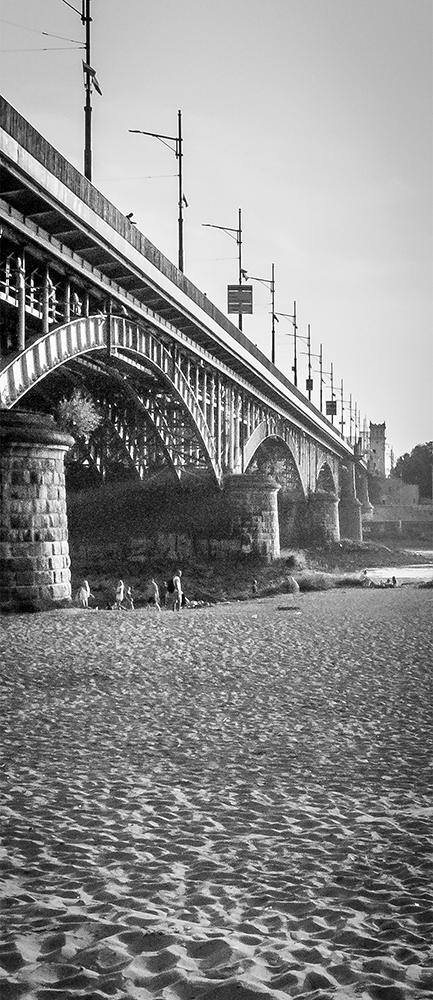
Poniatowski Bridge
Poniatowski Bridge, actually Bridge of prince Józef Poniatowski – bridge across the Vistula river, built in 1914 and rebuilt after World War I in 1946.
Poniatowski Bridge is one of Warsaw's oldest crossings across the Vistula. Plans to build a popular Poniatoszczak had already appeared in the last quarter of the nineteenth century. The final investment decision was not taken, however, until 1904, creating for this purpose the so-called The Third Bridge Construction Committee (there already were two bridges in Warsaw at that time – a passenger bridge Kierbedzia in place of today's Śląsko-Dąbrowski Bridge and the railway bridge, at the location of today's Gdański Bridge).
The pre-war Poniatowski Bridge had unbelievably bad luck. Already during the design stage, the designers and city authorities were accused of embezzlement and criticized for delays in the bridge construction. The final effect however, when the bridge was finished in 1914, delighted everyone with the degree of its artistic craftsmanship. Stefan Szyller himself, an outstanding Polish architect, author of the main gate of the University of Warsaw, participated in designing the characteristic bridge towers and pavilions.
In 1915 Poniatoszczak was first damaged by the Russian troops retreating from Warsaw. Emergency repairs using wooden elements proved to be a very bad idea – soon afterwards, a fire broke out. The whole structure was rebuilt properly only in 1927. A year earlier, on May 12, the bridge was home to another tumultuous event – the meeting between then Polish president Stanisław Wojciechowski and Józef Piłsudski, which resulted in a coup d'état organized by the latter (the so called May Coup).
The bridge was in the centre of more tumultuous events during World War II. Poniatowski, as an important strategic crossing, was one of the elements of fighting between German troops and Warsaw insurgents in 1944. Finally, in September, Germans blew up a bridge as they were leaving Warsaw.
The bridge was rebuilt very quickly, in eleven months and opened 22 VII 1946 during a celebration of the rebirth of the country, a propaganda event organized by the communist authorities. From that moment Poniatoszczak become the premier Warsaw's Vistula crossing, through which tens of thousands of cars and trams pass every day. The last big renovation of the bridge was carried out in the years 1985-1990. Minor repairs and modifications however take place regularly, every few years.
Do you know?
- Poniatowski Bridge originally was called Mikołajewski Bridge, in honour of the Russian Tsar Nicholas II. This name for obvious reasons, was not accepted. Already in 1913 the residents themselves found their own, unofficial patron, Józef Poniatowski – a fearless leader, killed a hundred years ago in the famous Bitwa Narodów (Battle of the Nations) (1813), nephew of the last Polish king Stanislaw August Poniatowski.
- The postwar Poniatowski underwent numerous architectural modifications. In the fifties the towers on the side of Prague were demolished and in 1962 the entrance pavilion from the city centre was dismantled. The whole bridge was widened and repaired in the sixties, seventies and eighties, adapting to the current road requirements.
- Portions of the pre-war Poniatoszczak could be observed for many years in the riverbed of the Vistula. The remains of the bridge were eventually collected and preserved.
- There are many plaques on the bridge, commemorating the construction and reconstruction of the bridge and various war-time events during the Second World War.
- The beach under the bridge Poniatowski on the Praga side of the Vistula, is one of the most popular outdoor attractions of Warsaw during the summer.






